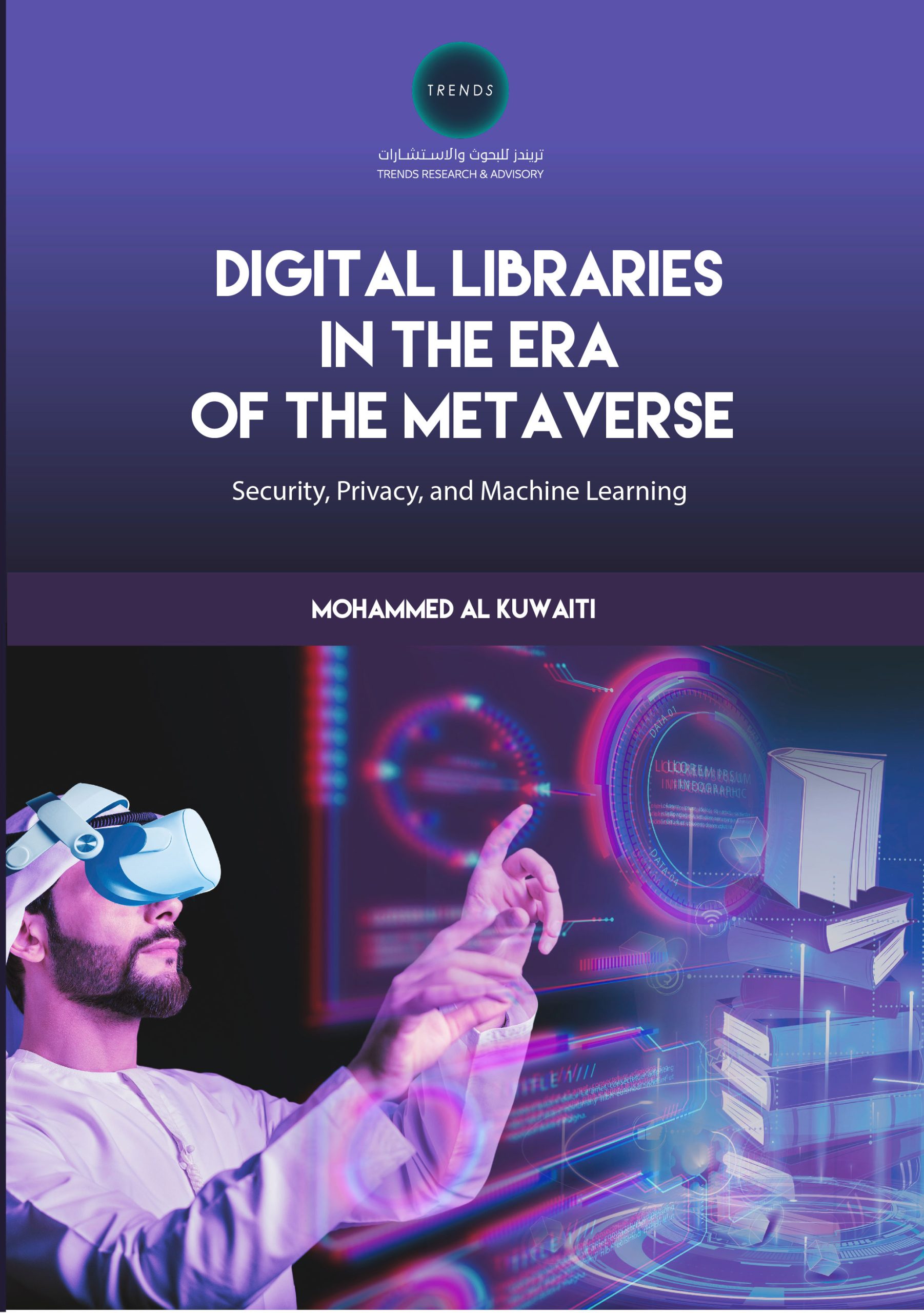In the dynamic landscape of the digital age, the concept of the metaverse emerges as a groundbreaking fusion of virtual and physical realities. This proposal embarks on a journey to unravel the intricate relationship between digital libraries, artificial intelligence (AI), and cybersecurity within the expansive metaverse. Our endeavor is not merely to recognize the challenges posed by this convergence but to illuminate pathways towards ensuring the security and integrity of digital assets in this ever-evolving environment. The cornerstone of digital protection is cybersecurity, which includes a wide range of methods and approaches meant to keep networks, systems, and data safe from malevolent parties. Simultaneously, AI is the highest level of technical development, allowing robots to mimic human thought processes and carry out jobs remarkably well. Conversely, digital libraries provide access to an abundance of knowledge and resources, serving as virtual strongholds of culture and knowledge. These domains’ convergence within the metaverse creates a special hub where security, innovation, and accessibility intersect, shaping the future of digital experiences.
Cybersecurity patterns demonstrate the creativity of threat actors by disclosing recurrent strategies and techniques used to get past defenses and compromise systems. The range of cyberattacks covered by these patterns is extensive, spanning from advanced persistent threats (APTs) to the spread of malware and phishing schemes. As a result, cybersecurity tactics change to keep up with the always-shifting threat landscape. Proactive steps like access controls, encryption, and behavioral analytics are used to thwart assaults and reduce risks. Moreover, continuous advancements in cybersecurity solutions make use of cutting-edge technology like AI and machine learning (ML) to improve detection capabilities, automate reaction mechanisms, and strengthen defenses against new threats.
A new age of immersive experiences and interactive surroundings is being ushered in by the development of the metaverse as a virtual shared place, driven by AI-driven technology. However, a plethora of cybersecurity issues are brought about by this convergence, such as identity theft, data manipulation, and virtual asset theft. The resolution of these concerns necessitates a diverse strategy that includes technological advancements, legal structures, and cooperative endeavors to create a reliable and safe metaverse ecology. Blockchain technology integration to protect digital identities and transactions, AI-driven threat detection to find and eliminate new threats, and strong encryption techniques to protect private information are a few potential solutions.




